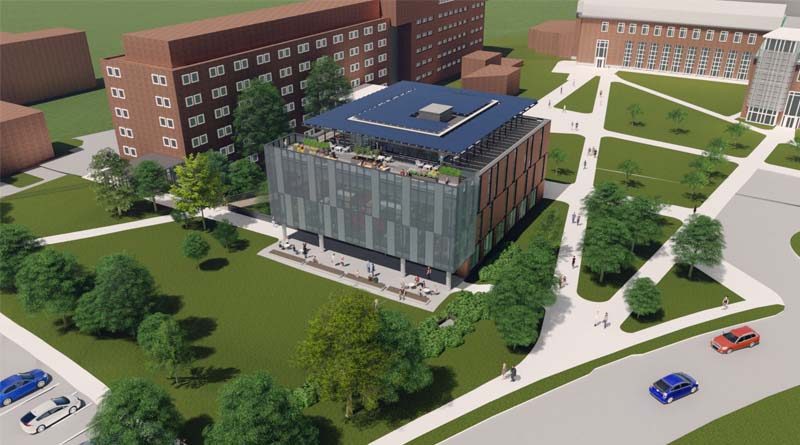Dartmouth Renovation Project on Target for LEED Gold
By SCN Staff
HANOVER, N.H.—With a completion date slated for this month the new Dartmouth College Dana Hall renovation in Hanover is targeted for LEED Gold certification.
This $25 million project reuses and adds to a vacant library in the heart of the medical school quad, that will transform it into a vibrant faculty center.
Leers Weinzapfel Architects is the architect on this impressive project and Windover Construction is the construction manager.
Located at the heart of 1960s medical school buildings on the school’s siloed north campus, the 32,995-square-foot Dana Hall project — as well as new entrances for its surrounding buildings, a wide pedestrian bridge, and new circulation between buildings — is transforming the college’s least compelling area into a well-scaled, inviting north quad. The initiative will generate an accessible, seamless link between north campus and the historic green and main campus, allowing it to be shared with undergraduate sciences.
The demolition of an unused laboratory adjacent to Dana Hall made way for its new addition, which reorients the building to create inviting campus connections to the south. Comprising the new social center of north campus, the addition houses the building’s lobby and a café, with an adjacent terrace overlooking a green.
Tied together by a spiral object stair visible from the south lawn, the building’s upper floors contain faculty offices, classrooms, and places for student gathering. The penthouse level features a solar-paneled canopy and a south-facing planted terrace that overlooks the iconic main campus. The walkout graduate student lounge in the basement opens to a protected courtyard below a pedestrian bridge.
Existing hazardous materials in Dana Hall required removing the interior down to its concrete columns and slabs before construction could begin.
As a reused structure in a cold climate, the choices of high R value terra-cotta-clad walls, solar panel canopy triple-glazed windows, and south-facing glass with an expanded metal interlayer to limit summer sun — along with reusing the existing concrete structure — create a building with a low embodied energy that approaches net zero energy usage.

